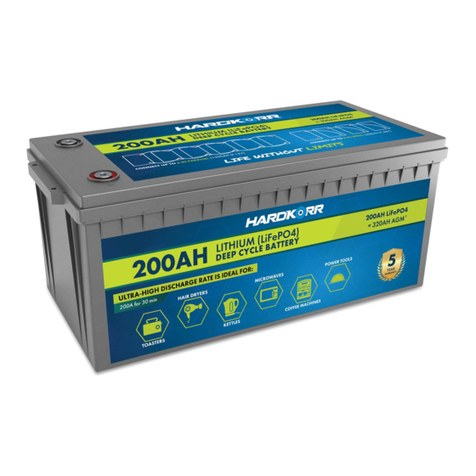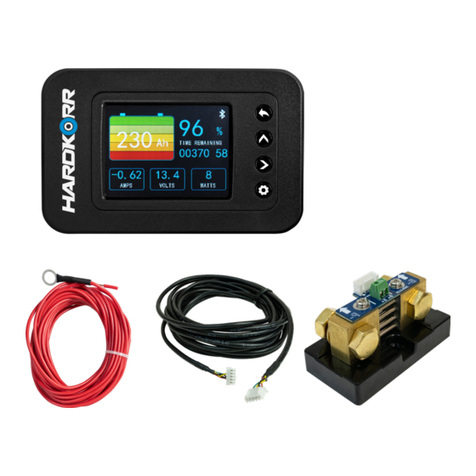
4
GENERAL INFORMATION
AND SAFETY (CONT.)
WARNING
Failure to follow these instructions may result in personal or property
injury, as well as reduced battery life or battery failure.
• Do not use this battery for cranking applications.
• Do not submerge the battery in water.
• Do not short circuit the battery terminals.
• Do not puncture, impact or drop the battery.
• Do not disassemble the battery. Opening the case may cause electric
shock or fire and will void your warranty.
• Do not expose the battery to fire, sparks, high voltage or
temperatures in excess of those stipulated in the specifications table
of this manual.
• Do not series or parallel connect more than six (6) of these batteries
together. Ensure that connections are made correctly as per the
“Usage and Storage” section of this manual. Do not connect this
battery to batteries with different chemistries.
• Do not store the battery at a voltage lower than 11.5V.
• Endeavour to keep the battery above 20% SOC where possible.
• Observe the limitations of this battery as stipulated in the
specifications table of this manual, paying particular attention to
maximum charge and discharge currents.
• To charge the battery, you must use a charger with a specific
charging profile for lithium batteries. Your warranty may be reduced
or voided if you use an unsuitable charger.
• If the battery emits any unusual smells, appears to be atypically hot,
shows signs of distortion or displays any other abnormality during
operation or storage, discontinue use immediately and contact
Hardkorr for assistance.
























